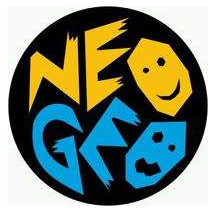RFC1652 - SMTP Service Extension for 8bit-MIMEtransport
时间:2024-11-18 00:56:46
来源:网络
浏览:11次
Network Working Group J. Klensin, WG Chair
Request for Comments: 1652 MCI
Obsoletes: 1426 N. Freed, Editor
Category: Standards Track Innosoft
M. Rose
Dover Beach Consulting, Inc.
E. Stefferud
Network Management Associates, Inc.
D. Crocker
Silicon Graphics, Inc.
July 1994
SMTP Service Extension for 8bit-MIMEtransport
Status of this Memo
This document specifies an Internet standards track protocol for the
Internet community, and requests discussion and suggestions for
improvements. Please refer to the current edition of the "Internet
Official Protocol Standards" (STD 1) for the standardization state
and status of this protocol. Distribution of this memo is unlimited.
Abstract
This memo defines an extension to the SMTP service whereby an SMTP
content body consisting of text containing octets outside of the US-
ASCII octet range (hex 00-7F) may be relayed using SMTP.
1. IntrodUCtion
Although SMTP is widely and robustly deployed, various extensions
have been requested by parts of the Internet community. In
particular, a significant portion of the Internet community wishes to
exchange messages in which the content body consists of a MIME
message [3] containing arbitrary octet-aligned material. This memo
uses the mechanism described in [5] to define an extension to the
SMTP service whereby such contents may be exchanged. Note that this
extension does NOT eliminate the possibility of an SMTP server
limiting line length; servers are free to implement this extension
but nevertheless set a line length limit no lower than 1000 octets.
Given that this restriction still applies, this extension does NOT
provide a means for transferring unencoded binary via SMTP.
2. Framework for the 8bit MIME Transport Extension
The 8bit MIME transport extension is laid out as follows:
(1) the name of the SMTP service extension defined here is
8bit-MIMEtransport;
(2) the EHLO keyWord value associated with the extension is
8BITMIME;
(3) no parameter is used with the 8BITMIME EHLO keyword;
(4) one optional parameter using the keyword BODY is added to
the MAIL FROM command. The value associated with this
parameter is a keyword indicating whether a 7bit message
(in strict compliance with [1]) or a MIME message (in
strict compliance with [3]) with arbitrary octet content
is being sent. The syntax of the value is as follows,
using the ABNF notation of [2]:
body-value ::= "7BIT" / "8BITMIME"
(5) no additional SMTP verbs are defined by this extension;
and,
(6) the next section specifies how support for the extension
affects the behavior of a server and client SMTP.
3. The 8bit-MIMEtransport service extension
When a client SMTP wishes to submit (using the MAIL command) a
content body consisting of a MIME message containing arbitrary lines
of octet-aligned material, it first issues the EHLO command to the
server SMTP. If the server SMTP responds with code 250 to the EHLO
command, and the response includes the EHLO keyword value 8BITMIME,
then the server SMTP is indicating that it supports the extended MAIL
command and will accept MIME messages containing arbitrary octet-
aligned material.
The extended MAIL command is issued by a client SMTP when it wishes
to transmit a content body consisting of a MIME message containing
arbitrary lines of octet-aligned material. The syntax for this
command is identical to the MAIL command in [1], except that a BODY
parameter must appear after the address. Only one BODY parameter may
be used in a single MAIL command.
The complete syntax of this extended command is defined in [5]. The
esmtp-keyword is BODY and the syntax for esmtp-value is given by the
syntax for body-value shown above.
The value associated with the BODY parameter indicates whether the
content body which will be passed using the DATA command consists of
a MIME message containing some arbitrary octet-aligned material
("8BITMIME") or is encoded entirely in accordance with [1] ("7BIT").
A server which supports the 8-bit MIME transport service extension
shall preserve all bits in each octet passed using the DATA command.
Naturally, the usual SMTP data-stuffing algorithm applies so that a
content which contains the five-character sequence of
<CR> <LF> <DOT> <CR> <LF>
or a content that begins with the three-character sequence of
<DOT> <CR> <LF>
does not prematurely terminate the transfer of the content. Further,
it should be noted that the CR-LF pair immediately preceeding the
final dot is considered part of the content. Finally, although the
content body contains arbitrary lines of octet-aligned material, the
length of each line (number of octets between two CR-LF pairs), is
still subject to SMTP server line length restrictions (which may
allow as few as 1000 octets on a single line). This restriction means
that this extension MAY provide the necessary facilities for
transferring a MIME object with the 8BIT content-transfer-encoding,
it DOES NOT provide a means of transferring an object with the BINARY
content-transfer-encoding.
Once a server SMTP supporting the 8bit-MIMEtransport service
extension accepts a content body containing octets with the high-
order (8th) bit set, the server SMTP must deliver or relay the
content in such a way as to preserve all bits in each octet.
If a server SMTP does not support the 8-bit MIME transport extension
(either by not responding with code 250 to the EHLO command, or by
not including the EHLO keyword value 8BITMIME in its response), then
the client SMTP must not, under any circumstances, attempt to
transfer a content which contains characters outside the US-ASCII
octet range (hex 00-7F).
A client SMTP has two options in this case: first, it may implement a
gateway transformation to convert the message into valid 7bit MIME,
or second, or may treat this as a permanent error and handle it in
the usual manner for delivery failures. The specifics of the
transformation from 8bit MIME to 7bit MIME are not described by this
RFC; the conversion is nevertheless constrained in the following
ways:
(1) it must cause no loss of information; MIME transport
encodings must be employed as needed to insure this is
the case, and
(2) the resulting message must be valid 7bit MIME.
4. Usage Example
The following dialogue illustrates the use of the 8bit-MIMEtransport
service extension:
S: <wait for connection on TCP port 25>
C: <open connection to server>
S: 220 dbc.mtview.ca.us SMTP service ready
C: EHLO ymir.claremont.edu
S: 250-dbc.mtview.ca.us says hello
S: 250 8BITMIME
C: MAIL FROM:<ned@ymir.claremont.edu> BODY=8BITMIME
S: 250 <ned@ymir.claremont.edu>... Sender and 8BITMIME ok
C: RCPT TO:<mrose@dbc.mtview.ca.us>
S: 250 <mrose@dbc.mtview.ca.us>... Recipient ok
C: DATA
S: 354 Send 8BITMIME message, ending in CRLF.CRLF.
...
C: .
S: 250 OK
C: QUIT
S: 250 Goodbye
5. Security Considerations
This RFCdoes not discuss security issues and is not believed to
raise any security issues not already endemic in electronic mail and
present in fully conforming implementations of [1].
6. Acknowledgements
This document represents a synthesis of the ideas of many people and
reactions to the ideas and proposals of others. Randall Atkinson,
Craig Everhart, Risto Kankkunen, and Greg Vaudreuil contributed ideas
and text sufficient to be considered co-authors. Other important
suggestions, text, or encouragement came from Harald Alvestrand, Jim
Conklin, Mark Crispin, Frank da Cruz, "Olafur Gudmundsson, Per
Hedeland, Christian Huitma, Neil Katin, Eliot Lear, Harold A.
Miller, Keith Moore, Dan Oscarsson, Julian Onions, Neil Rickert, John
Wagner, Rayan Zachariassen, and the contributions of the entire IETF
SMTP Working Group. Of course, none of the individuals are
necessarily responsible for the combination of ideas represented
here. Indeed, in some cases, the response to a particular criticism
was to accept the problem identification but to include an entirely
different solution from the one originally proposed.
7. References
[1] Postel, J., "Simple Mail Transfer Protocol", STD 10, RFC821,
USC/Information Sciences Institute, August 1982.
[2] Crocker, D., "Standard for the Format of ARPA Internet Text
Messages", STD 11, RFC822, UDEL, August 1982.
[3] Borenstein, N., and N. Freed, "Multipurpose Internet Mail
Extensions", RFC1521, Bellcore, Innosoft, September 1993.
[4] Moore, K., "Representation of Non-ASCII Text in Internet Message
Headers", RFC1522, University of Tennessee, September 1993.
[5] Klensin, J., Freed, N., Rose, M., Stefferud, E., and D. Crocker,
"SMTP Service Extensions", RFC1651, MCI, Innosoft, Dover Beach
Consulting, Inc., Network Management Associates, Inc., Silicon
Graphics, Inc., July 1994.
[6] Partridge, C., "Mail Routing and the Domain System", STD 14, RFC
974, BBN, January 1986.
8. Chair, Editor, and Authors" Addresses
John Klensin, WG Chair
MCI Data Services Division
2100 Reston Parkway, 6th floor
Reston, VA 22091
USA
Phone:: 1 703 715 7361
Fax: +1 703 715 7435
EMail: klensin@mci.net
Ned Freed, Editor
Innosoft International, Inc.
1050 East Garvey Avenue South
West Covina, CA 91790
USA
Phone:: +1 818 919 3600
Fax: +1 818 919 3614
EMail: ned@innosoft.com
Marshall T. Rose
Dover Beach Consulting, Inc.
420 Whisman Court
Moutain View, CA 94043-2186
USA
Phone: +1 415 968 1052
Fax: +1 415 968 2510
EMail: mrose@dbc.mtview.ca.us
Einar A. Stefferud
Network Management Associates, Inc.
17301 Drey Lane
Huntington Beach, CA, 92647-5615
USA
Phone: +1 714 842 3711
Fax: +1 714 848 2091
EMail: stef@nma.com
Dave Crocker
Silicon Graphics, Inc.
2011 N. Shoreline Blvd.
P.O. Box 7311
Mountain View, CA 94039
USA
Phone: +1 415 390 1804
Fax: +1 415 962 8404









